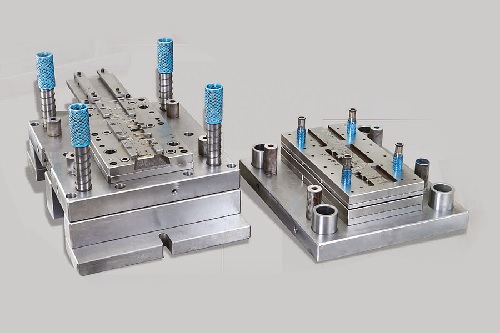The Role of Tool and Die Design in Metal Pressing Companies: Enhancing Precision and Efficiency

Strong 8k brings an ultra-HD IPTV experience to your living room and your pocket.
Tool and die design plays an important role in manufacturing especially within metal pressing companies. This process creates tools and dies used for shaping and cutting metal parts, which is important to achieve the desired accuracy and efficiency in production.
The success of manufacturing operations depends on the ability to innovate and optimize tool and die design. It ensures the companies remain competitive in the manufacturing market. In this post, you can explore the role of tool and die design in metal pressing companies:
Understanding Tool and Die Design
Tool and die design is the process of designing and engineering the tools. It is used in manufacturing processes such as stamping, copying, machining, etc. The essential equipment for molding metal into precise shapes and sizes are these tools and dies. The design phase is important to determine the tool's functionality, durability and overall effectiveness in the production line.
In metal pressing companies, the tools and dies are planned to endure high pressures and extreme conditions. This requires an understanding of the material properties and complexities of the production process. A well designed tool can reduce the production costs, minimize waste and enhance the quality of the product.
The Design Process
The tool and die design process starts with a thorough analysis of the product requirements. Designers work with engineers and manufacturing teams to determine the specific dimensions and materials needed for the tool. This collaboration ensures the design meets functional and practical standards.
Using advanced software such as CAD and CAM, designers create detailed models of the tools and dies. These digital representations allow for models and can predict how the tools will perform under various conditions. It identifies the design flaws before physical production starts.
Enhancing Precision
Precision improvement in metal pressing operations is one of the key advantages of well-designed tools and dies. Precision is important in manufacturing. Sometimes minor Inconsistency can lead to issues downstream including product failures and increased costs.
By using advanced design techniques, engineers can create tools to ensure consistent dimensions and tolerances. This evenness is important in manufacturing industries such as automotive and aerospace where safety is important. The ability to produce parts with the right specifications can minimize the risk of defective products. It leads to higher customer satisfaction.
Precision in metal pressing companies translates directly to customer satisfaction. Clients demand high quality components that fit into their products and achieving this requires careful attention to detail during the design phase. Effective tool and die design minimizes the need for rework.
Improving Efficiency
Efficiency is an important aspect where tool and die design influences metal pressing companies. Well-designed tools can enhance the speed of the manufacturing process. It allows companies to produce larger quantities of parts in a short period of time.
Tools that facilitate quick changeovers between different products can reduce downtime. In production environments, the ability to switch tools without compromising quality is invaluable. This efficiency improves throughput and contributes to cost savings.
Additionally, tool design optimization can lead to a reduction in material usage. Efficient designs minimize waste by ensuring materials are utilized effectively during the pressing process. This benefits the company's outcome and is suitable for sustainability efforts in the industry.
Continuous Improvement
Metal pressing companies use important methodologies like Lean Manufacturing to improve their processes. By analyzing performance metrics, these companies can identify blockages and inefficiencies. It allows for ongoing refinement of tool and die design and production processes.
Future Trends
Developing trends such as 3D printing are beginning to influence the way tools and dies are designed and produced. These technologies allow for more complex geometries and lighter designs which can enhance efficiency and accuracy.
The integration of Industry 4.0 concepts including IoT and data analytics is controlled to transform how metal pressing companies approach tool and die design.
Summing It Up
Tool and die design is the basis of the operations within metal pressing companies. Its impact on precision and efficiency is intense and it influences everything from product quality to production speed. As manufacturing companies continue to develop, the role of innovative and collaborative design practices will be important for companies looking to maintain a competitive edge. By prioritizing effective tool and die design, manufacturers can enhance their capabilities, reduce costs and deliver better products to their customers.
Note: IndiBlogHub features both user-submitted and editorial content. We do not verify third-party contributions. Read our Disclaimer and Privacy Policyfor details.


